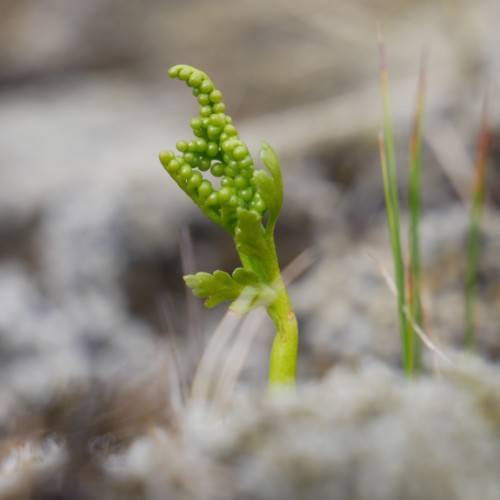
Lanceleaf Grapefern
Botrychium lanceolatum subsp. lanceolatum
Also Known As - Triangle Moonwort,Lance Leaved MoonwortWatering:
Average
Hardiness Zone:
Sun:
Partial Shade
Soil:
Sand, Loam
Leaf:
Yes
Growth Rate:
Low
watering
Western Moonwort (Botrychium hesperium) requires medium to dry soil that is well-drained with a slightly acidic balance. It should be watered regularly, but not too often - about once per week should suffice. During warmer months, you can water a bit more frequently (every 5-7 days). When watering, use either rainwater or distilled water, as tap water tends to have too much chlorine. In the winter, cut back on watering just enough to keep the soil from drying out completely. Be careful not to over water as this can lead to rotting.
sunlight
Western Moonwort (Botrychium hesperium) is a plant species that does best in full sun but can tolerate partial shade and a variety of soils. This species has a preference for moist, cool, and well-drained soils and does not thrive in soils that are dry or overly wet. Western Moonwort can grow in full sun, partial shade, and in the shade of deciduous trees and shrubs. In areas where this plant is grown, it should receive at least 5 hours of direct sunlight per day for optimal growth. During the peak of summer, however, it is best to provide some light shade (especially during midday when the sun is strongest). Western Moonwort may also benefit from supplemental light when grown indoors or in low-light areas. An artificial light source placed on a timer can provide the additional light the plant needs to stay healthy and vigorous. Make sure the light source is positioned so that it is not too close to the plant and that it is not left on continuously as this can cause leaf burn.
pruning
Western Moonwort (Botrychium hesperium) should be pruned early in the spring, after the last frost passes but before the fronds begin to unfurl. Pruning should be light, as the fronds are easily damaged and the plant is slow to regrow. Remove any dead or damaged fronds, as well as any fronds that cross over on each other; these can cause damage to the plant as the fronds unfurl. Pruning should be limited to no more than 1-third of the fronds, and should focus on the damaged or overcrowded parts of the plant. Western Moonwort is not a heavy feeder, and so additional fertilizer or nutrient supplementation is typically unnecessary.
